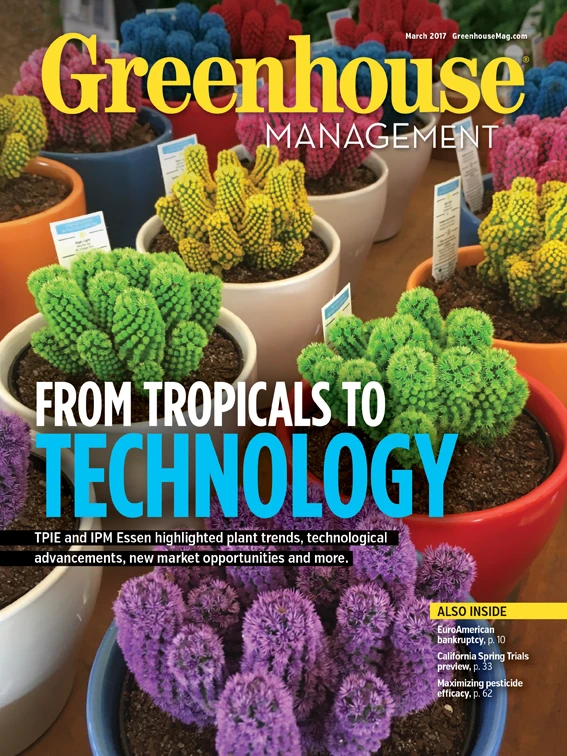
Editor’s note: Excerpt from “2017 Trends in Garden Design” published in Garden Design Magazine’s Autumn 2016 issue, by Pam Penick. Reprinted and edited with permission from Garden Design. Five of 10 trends are listed here. To read the rest, visit gardendesign.com/trends/2017.html
Gardening can seem trend proof. After all, you can’t hurry an oak’s progress from acorn to shade tree, and making a garden isn’t like buying a new throw rug for your home but rather stitching a few glimmering threads of your own into nature’s rich tapestry. And yet tastes do change in gardening, as your once-obsessed African violet-growing parents or grandparents could tell you. Those who work with the buying public are especially attuned to what’s hot and what’s not. We asked designers and retailers across the country to share the biggest trends they anticipate for 2017. Here are five trends they say we’ll be seeing more of.
1. Natural dye gardens
Backyard homesteading has been going strong for a while, and edible gardens, chicken coops and beehives are ubiquitous, even in urban neighborhoods. The latest addition to the grow-it-yourself movement is natural dye gardens: plants used to make dyes for coloring textiles, yarn and clothing.
“Last year, I put in my first natural dye garden here in Berkeley,” says Leslie C. Bennett, owner of Pine House Edible Gardens in Oakland, Calif. “It’s really beautiful and includes a lot of vegetables, fruit trees, and pollinator-attracting flowers, but we’ve selected varieties and quantities so that the harvests can be used for natural plant dyes as well.” Multiple recent books including Sasha Duerr’s “Natural Color,” Kristine Vejar’s “The Modern Natural Dyer,” and Chris McLaughlin’s “A Garden to Dye For” also attest to the growing interest in dye gardening.
Bennett favors coreopsis, cosmos, Japanese indigo, marigold, ‘Moonshine’ yarrow, blue cornflower and purple basil for making dyes. “Many of these are kitchen and cutting garden favorites too,” she points out. “So it’s pretty easy to integrate a natural dye garden into an edible garden.”

2. Hyperlocalism
“Locally sourced” continues to be a buzzword in many industries, and garden designers too are seeing interest not just in native plants but endemic plants — those native to a very particular ecosystem. Tait Moring, a landscape architect who often designs ranch properties in central Texas, says, “We’re planting more local and endemic plants, not just natives.” These aren’t always readily available in the nursery trade, so he transplants existing plants where he can. Even building materials are sourced hyperlocally. “We use existing rocks and make posts from on-site junipers when possible.”
Such hyperlocalism is part of a trend that Susan Cohan, a New Jersey designer, calls a celebration of regionalism. Using native plants and locally sourced materials has been popular for years, she acknowledges. “What’s new,” she says, “is the impact that climate change is having on each region and how that drives design. More rain, drought, increased snowfall, no snowfall, cataclysmic weather events — these are all factors. Add local rules for impervious coverage, chemical runoff, and storm-water retention, and you have the basis for intense regional, even local, design qualities.” The designer's challenge, she says, has always been to find the balance between natural elements and human wants and use. “The answer to that challenge today is regionally focused design.”
3. Old and new mash up
Choosing one style and sticking doggedly to it, whether modern or traditional, is passé, designers say. “Mixing old and new, a trend in interiors and architecture, is about to arrive in gardens,” says Hartlage. “It used to not be OK to mix styles, but now it’s acceptable. It’s not about modern or traditional anymore but how you combine the two in a compelling way, either by putting modern elements in a traditional garden or incorporating bold, traditional elements in a modern garden.”
4. Dwarf shrubs

American yards are shrinking as houses grow larger on ever-smaller lots. Along with less space for plants, designers are hearing ever more requests for gardens that require little day-to-day maintenance. Dwarf shrubs to the rescue! “Baby boomers are aging, but they still love their gardens,” says Goetz. “We are finding creative ways to get rid of high maintenance, like using evergreen shrubs.”
Hartlage agrees. “Shrubs are strong due to their low maintenance needs,” he says, “and dwarf summer-blooming varieties are well suited to smaller gardens, like hydrangea ‘Bobo’ and ‘Little Quick Fire’. If you only need a 2-foot plant, why plant something that’ll grow to 4 feet and then spend the next 20 years clipping it? It’s all about plants that are the appropriate scale for the garden.
5. Haute houseplants
Just as bell bottoms are reappearing on runways, a 1970s-style fascination with houseplants is back. Los Angeles designer and author Justina Blakeney’s hugely popular Instagram The Jungalow, for example, showcases rooms lush with potted greenery.

Explore the March 2017 Issue
Check out more from this issue and find your next story to read.
Latest from Greenhouse Management
- Anthura acquires Bromelia assets from Corn. Bak in Netherlands
- Top 10 stories for National Poinsettia Day
- Langendoen Mechanical hosts open house to showcase new greenhouse build
- Conor Foy joins EHR's national sales team
- Pantone announces its 2026 Color of the Year
- Syngenta granted federal registration for Trefinti nematicide/fungicide in ornamental market
- A legacy of influence
- HILA 2025 video highlights: John Gaydos of Proven Winners





